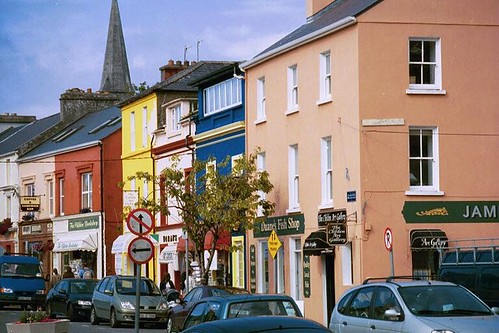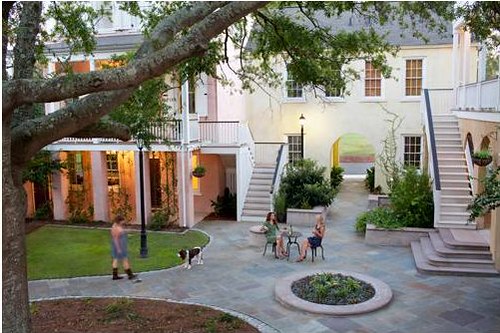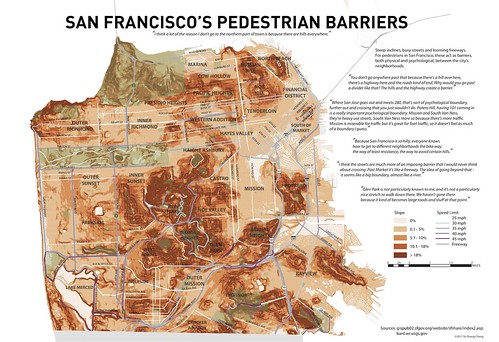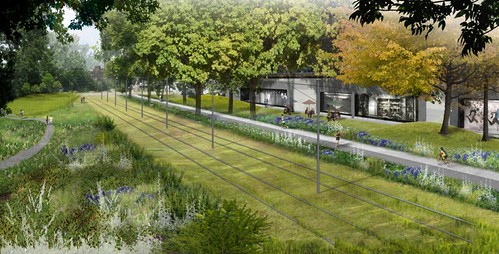Essays on community sustainability: my favorite posts of the year

Posted December 29, 2011 at 1:31PM
In 2011, I posted some 250 entries on my NRDC blog, quite a few of which were also published by The Atlantic, The Atlantic Cities, the Sustainable Communities Collective, and others. I am always grateful when they are.
As I have done for each of the years since I started blogging, I took an end-of-year look at the list of postings for the year, recalling when I wrote which ones and what I was thinking at the time, considering which if any seemed to be holding up a few months down the road. I sifted through them looking for personal favorites and picked about thirty, then a smaller group of twenty, and finally this list of eleven below.
I won’t say that they are the best posts, or as good as many that I have read by other commentators, about 35 of whom are plugged into my Google Reader. But they are the ones that mean the most to me personally, for reasons that usually differ from one to another. I hope some of you liked them, too:
The messy issue of design in smart growth (written with Lee Epstein, January 6)
Part of me feels like I shouldn’t care about design: I am a lawyer with the planet as my client, and it may not matter to Earth whether something is enticing or ugly, as long as it produces carbon or water benefits or whatever. But it matters to me, and to my co-writer Lee Epstein, and to our sense of what contributes to enduring environmental benefits and to community. Not that we have it all figured out, which is part of what makes it interesting to address. As advocates, we frequently are put in positions where we seem expected to know more than we really do or be more certain than we really are; but I am coming to the belief that a significant part of professional maturity is recognizing and honoring what we don’t know.
I really enjoy writing with Lee, my most frequent collaborator. He’s a great friend as well as an excellent thinker and writer. Every now and then he brings an idea to me. Sometimes they come fully realized, and any addition by me would only make them weaker; and sometimes, as in this case, they help me recognize that I have been wanting to say something myself on the subject. Then the prospect of collaboration energizes me to contribute.
In surprise move, House leaders propose national land use legislation (April 1, 2011)
I may have to stop writing April Fool’s posts, because so many people just aren’t getting the jokes, even though I throw in all sorts of clues. But this time, several commenters did get it. Suggestions for next year’s are welcome.
EPA Region 7: "We were just kidding about that sustainability stuff" (April 18, 2011)
There’s no question which of my posts this year got the most attention. This one, which appeared in multiple places, drew fire from sprawl defenders far and wide. Some of the comments were so vitriolic (one coward kept making up phony email addresses like kaidsucks@yahoo.com) that I had to delete them. I’m not backing down, though. For EPA to abandon a major downtown regional headquarters for a low-rise complex with a giant parking lot, across the road from a wheatfield, goes against everything its sustainable communities team has been teaching us for almost two decades. Somebody needed to say so.
The man who thinks Manhattan isn't dense enough (May 19, 2011)
The last couple of years have been big for libertarian economist Edward Glaeser, who abhors environmental regulation and historic preservation in favor of a sort of city-on-steroids ideal. As long as he personally doesn’t have to live there, of course. He isn’t entirely wrong in his points, but he takes them too far and, besides, he can be a jerk about it.
5 provocative ways to think about cities & neighborhoods (June 22, 2011)
Sometimes a post comes into being because I have several snippets of interesting material, none of which is strong enough on its own to support its own post. So, if they are relatable, I may put them together. That was the case this time, and it really worked; the post is still being read.
What does 'the pursuit of happiness' mean for communities? (June 29, 2011)
Like design, happiness and well-being are subjective elements that can be elusive to quantify and evaluate. But that doesn’t make them unimportant, as our country’s founders seemed to understand. In this pre-Independence Day post, I explored the reasons why.
The importance of place to sustainability (July 12, 2011)
Placemaking is incredibly important, and it’s not just about architecture and city planning. One of the blogs I subscribe to is that of the Project for Public Spaces, and I ran across a couple of articles by PPS staff that seemed to invoke both the ingredients of place and the power of positive examples to spread ideas. Those articles inspired this post.
The country's most ambitious smart growth project shows some progress, much remaining potential (July 26, 2011)
I love, love, love the Atlanta BeltLine, an ambitiously conceived project to bring parks, transit, and investment to a corridor of distressed neighborhoods, catalyzing workforce housing along the way. It incorporates so many of the values of community sustainability that it is hard to know where to start in a description. But I can’t help but wonder if the city of Atlanta is as committed to the project as they could be.
Imagining cities as a kid growing up in the Bible Belt (September 28, 2011)
Sometimes a post that means a great deal to me – that I really pour myself into, so to speak – may not resonate with my audience of policy and city design wonks. (I see the numbers showing which posts get how many reads, so I know which ones become the most popular.) That seemed to be the case with this, one of the most autobiographical posts I have written. A fellow blogger and friend had written about how his childhood had influenced his evolution as a thinker and documentarian, and this started out as a sort of response. My friend’s economic and family circumstances had led him to childhood experiences that I could only dream about. The interesting thing is that I did.
As an aside, I think I could probably get more readers if I reported the policy news and maybe became a sort of reliable house organ for smart growth and sustainable communities advocates. But, to be honest, that doesn’t interest me much as a writer. I would rather explore the more difficult issues and murky questions that the day-to-day stuff seldom reaches, and that other writers don’t address, at least not in the same way. Rather than simply advocating “sustainable urbanism,” I’d rather explore where it comes from, what it means, and whether we’re getting it right.
Is 'gentrification' always bad for revitalizing neighborhoods? (October 19, 2011)
I was certainly hesitant to explore this issue, as emotionally charged as they come. But it seems to me that we’ve got an internal contradiction if we deplore how things went bad when investment and people abandoned the city and yet we don’t want them to come back if it means change. There are lots of legitimate worries that we need to address, but the status quo is indefensible.
The importance of legacy to sustainability (November 28, 2011)
Finally, looking back over the year’s posts, I was struck by how often I wrote about historic preservation, one way or another. This is my favorite from that category, once again because a lot of it came from direct personal experience and thought.
Many thanks to my readers and colleagues for making this another good year for our journey together. Let’s do it again.
Move your cursor over the images for credit information.
Please also visit NRDC’s Sustainable Communities Video Channel.



